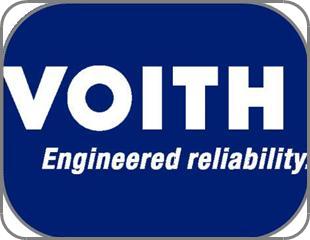

Voith Turbo Antriebstechnik, Heidenheim
Voith Turbo is a leading specialist for hydrodynamic and mechanical systems components, cooling systems and Scharfenberg® couplers. Voith Turbo works at the development of state-of-the art drive and braking systems for industry, rail, road and marine: mechanical, hydrodynamic, electrical and electronic solutions that drive machines efficiently, move vehicles comfortably, save energy and reduce emissions.
Voith Turbo supports concept, design and realization of drive systems for all kinds of rail vehicles – including the latest technologies. Products from Voith Turbo are in thousands of successful installations in railway systems all over the world.
While cooperating with the University of Siegen (USI) VTA was originally triggering EQOQUEST. As a supplier of large cooling units to many locomotive manufacturers VTA is interested in a steady improvement of this product. Thus VTA are an essential partner when it comes to provide the test cooling unit, to carry out the mock-up and eventually the locomotive test campaigns.
Key personnel
Dipl. Ing. (FH) Uwe Mauch achieved his engineering degree from the University of applied sciences Aalen (Germany) in general mechanical engineering. Upon graduation he worked in the design department of the Voith division Papermaschines. Since 2003 he became project leader at Voith Turbo. He is responsible for cooling systems for rail applications (design, test field) with a special focus on acoustics.
Dr.-Ing. Dietmar Mandt earned his engineering degree and his PhD from RWTH Aachen University (Germany) in Mechanical Engineering. He worked in the field of acoustics since 1998. He is currently the Head of Engineering Service, the simulations and calculations department of Voith Turbo rail division.
Assistance is given by the Head of the division, Dipl.-Ing. (FH) Bassmann.
Expected outcome/exploitable results and ’action plan' to get results in use
Important expected outcomes are (i) the concept study of a range of locomotive cooling units, (ii) a unit incorporating innovative features, (iii) the computer simulation tools for noise prediction. Immediate action is the transfer of the new built cooling unit to VTLT where it is implemented in a series production locomotive and tested under standardized conditions. If the new design shows the expected improvements, a series production is planned immediately. Also, VTA will consider the opportunity to patent research outcomes, in line with the IPR scheme detailed in the Consortium Agreement, in accordance with the provisions set forth considering joint ownership and exploitation of background and foreground knowledge.
In addition VTA as an OEM plans to market the technology to
other locomotive manufactures.

